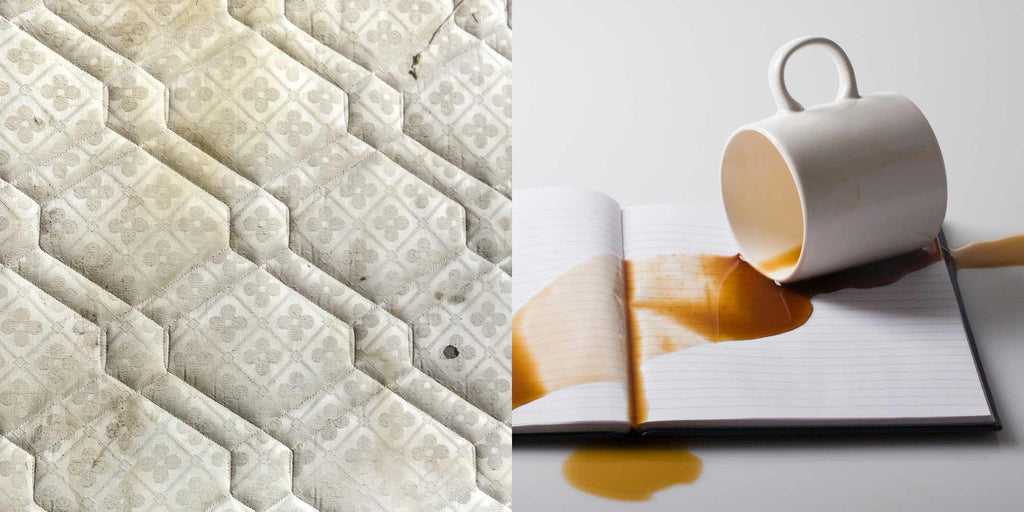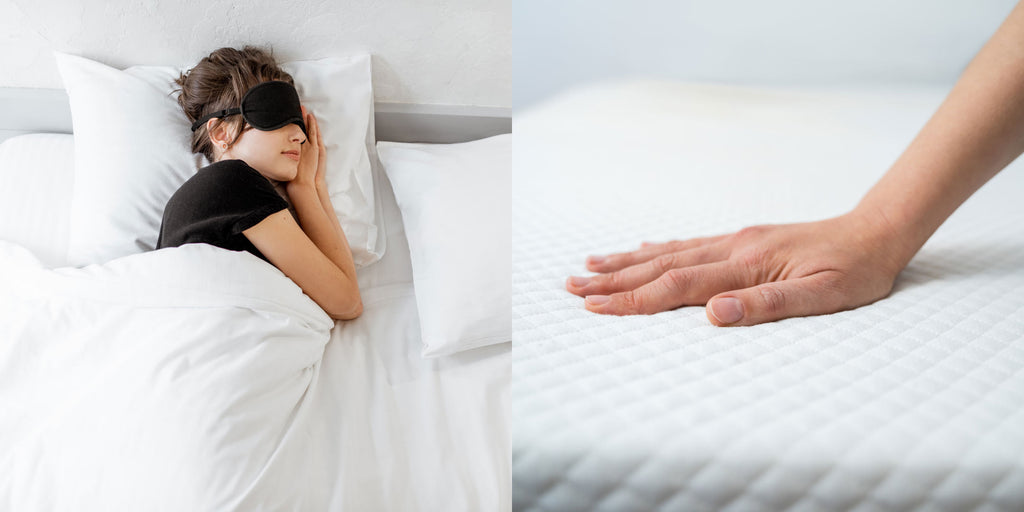When the temperature in Singapore rises and your room becomes humid, your walls, cushions, and mattress start to grow mould. While you can get rid of mould from your walls with a brush and cleaning solution, getting rid of the buildup on your mattress is another story.
Mould may not hurt your back when sleeping on your mattress, but the fungus has several health problems that you shouldn’t overlook.
If the temperature is noticeably higher or if you notice some dark dots on your mattress, there’s a chance that mould is already building up in your mattress. But do not fret.
This guide will introduce some tips that you can follow to get rid of the mould on your mattress.
What Causes Mould Growth on Mattresses?

Mould spores thrive and grow in warm, humid, and damp areas, including the mattress, where sweats, oils, water from showering, and skincare products penetrate. Even if you keep your bedroom clean, mould can still build up on your mattress, especially when the heat is scorching.
Some things that cause mould buildup are:
- Warm temperatures and high humidity levels in your bedroom
- Improper ventilation
- Nighttime perspiration, body oils, and skincare products
- Accidental spills and pee stains
- Placing your mattress on the floor
Overall, a hot and damp environment is the best formula for developing mould on your sleeping solution. Mould can grow within your mattress and go undetected until you strip the bedding off your bed.
What Does Mould Look Like on a Mattress?
To detect an emerging mould infestation on your mattress, it’s crucial to understand these signs:
Odours

Your mattress exhibits a distinct musty odour. Think about what the atmosphere smells like after rain.
Stains

You notice some blotches of different colours, from off-white to pinkish or purplish to dark spots, on your mattress. These dots can be fuzzy-looking and maybe deeper than they appear since mould can grow within the layers of the mattress.
Mould on Other Parts of Your Bedroom

If you see mould growing on some parts of your bedroom, let’s say the walls, then check your mattress. Mould spores can spread into the air and stick to different surfaces, including your walls. Some common signs of mould on your walls are warping, bubbling, or peeling paint.
Insect Infestation

Aside from visible discoloration, mould growth and odour can also invite pests like gnats and mites onto your mattress. Oh, we don’t want them there!
Allergy and Asthma Symptoms

If you have existing health issues, the buildup of mould on your mattress can exacerbate symptoms like itching, sneezing, headaches, watery eyes, congestion, and difficulty breathing. This is especially dangerous for children, elders, and immunocompromised people.
Step-by-Step Guide to Removing Mould on Your Mattress

It’s not the end of it all when your mattress catches some mould. First, gather the items you need to remove the mould from your mattress:
- Clean cloth
- Warm water
- Rubbing alcohol or isopropyl alcohol
- Hydrogen peroxide
- Container
- Disinfectant
Below are some steps to get mould out of your mattress:
- Vacuum your mattress thoroughly. Tackle both sides of your mattress to remove mould spores that linger around your sleeping surface. Thoroughly clean your vacuum afterwards to prevent the spores from spreading to other surfaces.
- Prepare a cleaning solution with equal parts of rubbing alcohol and warm water. Alternatively, you can use a cleaning solution with a 3:1 water and hydrogen peroxide mixture.
- Dip a clean cloth in the solution and carefully scrub the mould on the area of your mattress in a circular motion.
- You may rinse the cloth or use a new cloth to thoroughly tackle the mould with your alcohol and water solution. Remember to not soak the mattress with too much water as it can only increase the mould growth.
- Get a suitable upholstery disinfectant and spray it sparingly on the entirety of your mattress.
- If possible, dry your freshly cleaned mattress under the sun. Sunlight can inhibit the growth of mould on your mattress and can speed up the drying process after cleaning. If sun drying is not possible, open your windows and let fresh air circulate into your bedroom.
How to Prevent Mould Growth on Your Mattress

It takes time and effort to tackle mould on your mattress. The easiest solution? Prevent mould from building up in the first place. Here’s how:
- Use a dehumidifier, especially during hot and humid days.
- Use an air purifier to filter your indoor air. The right air purifier can even tackle mould spores and prevent them from sticking and building up in your mattress.
- Let air circulate within your mattress. You can use your air conditioner to improve your indoor air quality or your ceiling fan to circulate the air around your bedroom.
- Invest in a slatted bed frame that allows both sides of your mattress to breathe. Consequently, allow sunlight to enter your bedroom during the day to keep mould spores at a manageable level.
- Invest in a mould resistant mattress with anti-dust mite, anti-bacterial, and anti-fungal properties. Mattresses in Singapore like the Somnuz Comfort Night mattress feature a moisture-repellent cover that wicks away sweats, oils, spills, and excess moisture caused by the humidity in your bedroom.
- Use a mattress protector to guard your mattress against moisture that causes mould buildup.
Is It Safe to Sleep on a Mattress with Mould?

Mould on your mattress can cause allergy and asthma symptoms, as well as some long-term health implications. As soon as you spot some signs of mould on your mattress, tackle them as soon as possible.
When Should You Replace Your Mattress?

If the mould infestation is too deep inside your mattress and is already hard to remove with the solutions above, you may want to look for professional mattress cleaning services or fully replace your mattress.
Conclusion

Mould can look like a simple stain on your mattress at a glance, but it can already be a deep problem that isn’t just ruining your mattress but also affecting your health. To address this issue, ensure that your bedroom has adequate ventilation and that you choose a mattress that can wick away moisture that causes mould.








